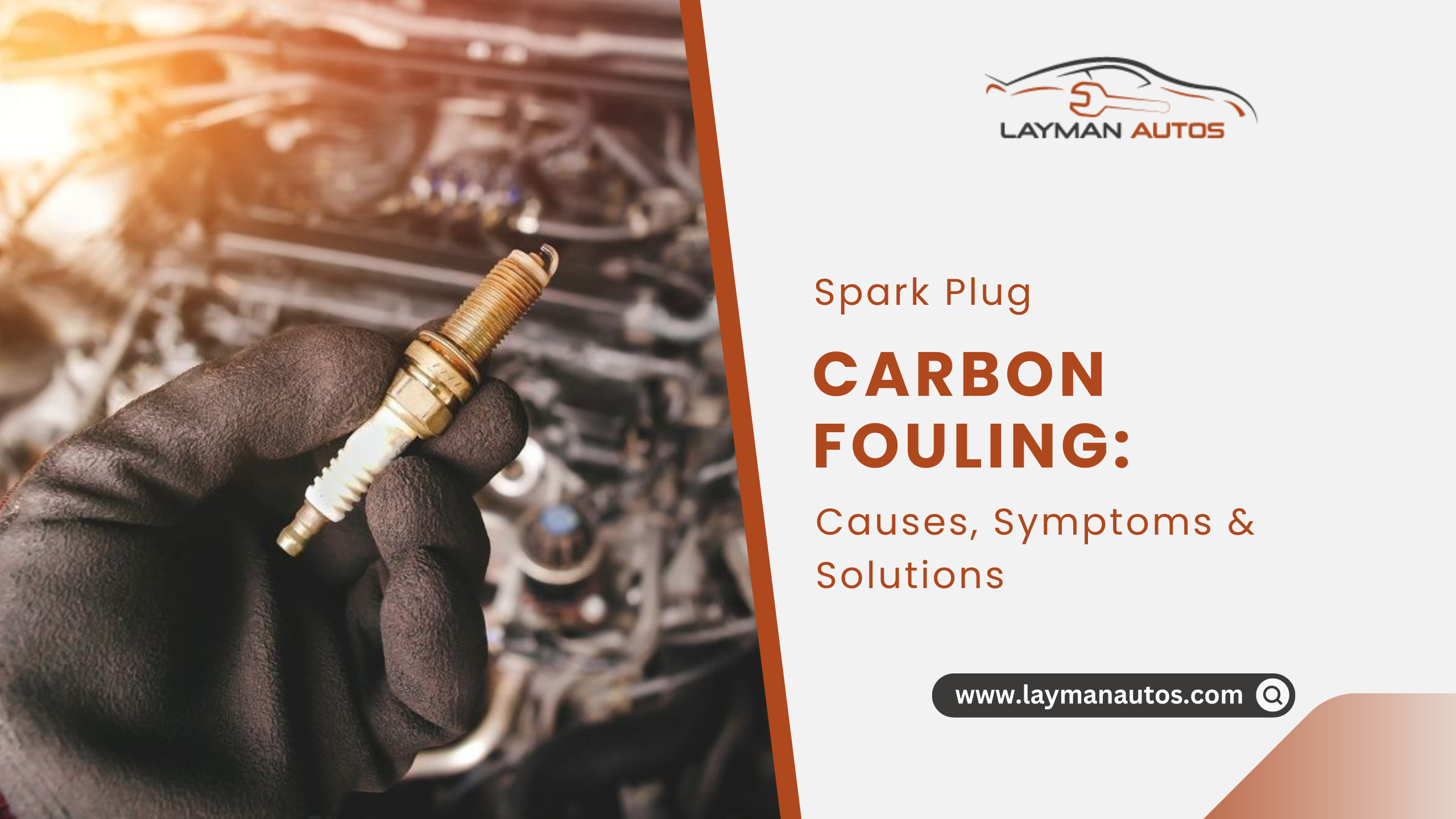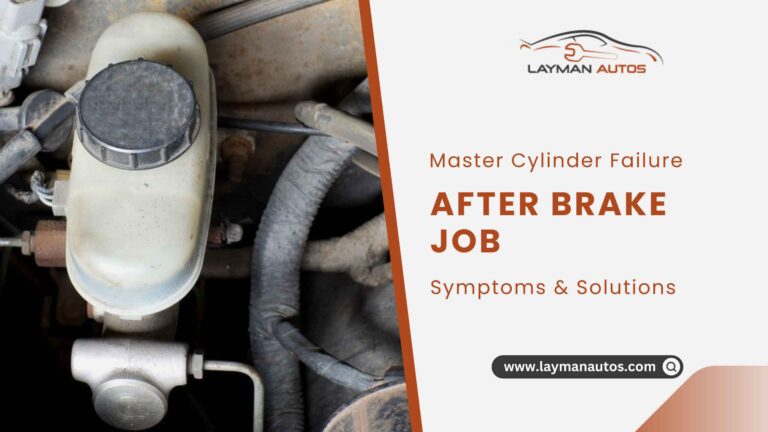Spark Plug Carbon Fouling Causes, Symptoms & Solutions
Most issues with gasoline engines may be traced back to spark plugs that have been clogged by carbon. The engine’s performance, fuel efficiency, and even failure can all be negatively impacted by carbon deposits on the electrodes.
Spark plugs can get carbonized for a variety of reasons. Having a carbon clogged spark plug is often the result of a filthy air filter. The engine has to work harder to get air when the air filter is filthy. Due to this, more gasoline is burnt, leading to increased carbon deposits on the spark plugs.
This article will explain Spark Plug Carbon Fouling Causes and offer advice on how to avoid this problem in the future.
What’s A Spark Plug?
To ignite the air/fuel combination in a gasoline engine, a spark plug is employed. The spark plug wire and spark plug terminal are the two metal electrodes that make up the spark plug.
When the engine is started, the ignition system delivers a high-voltage pulse through the spark plug wire, creating a spark that jumps between the plug’s electrodes. When this spark reaches the air/fuel combination, it ignites and the engine starts.
A spark plug’s job is to start a fire in the engine’s combustion chamber, where the flame will spread via the air and fuel. The flame front ignites the mixture of air and fuel, resulting in uniform combustion. Poor engine performance can be brought by excessive carbon accumulation on the electrodes, which interferes with the flame front and dampens the flame.
How Does A Spark Plug Work?
The spark plug ignites the fuel/air mixture by igniting the gap between its two electrodes. The engine starts up because the air and fuel combination is ignited by the spark.
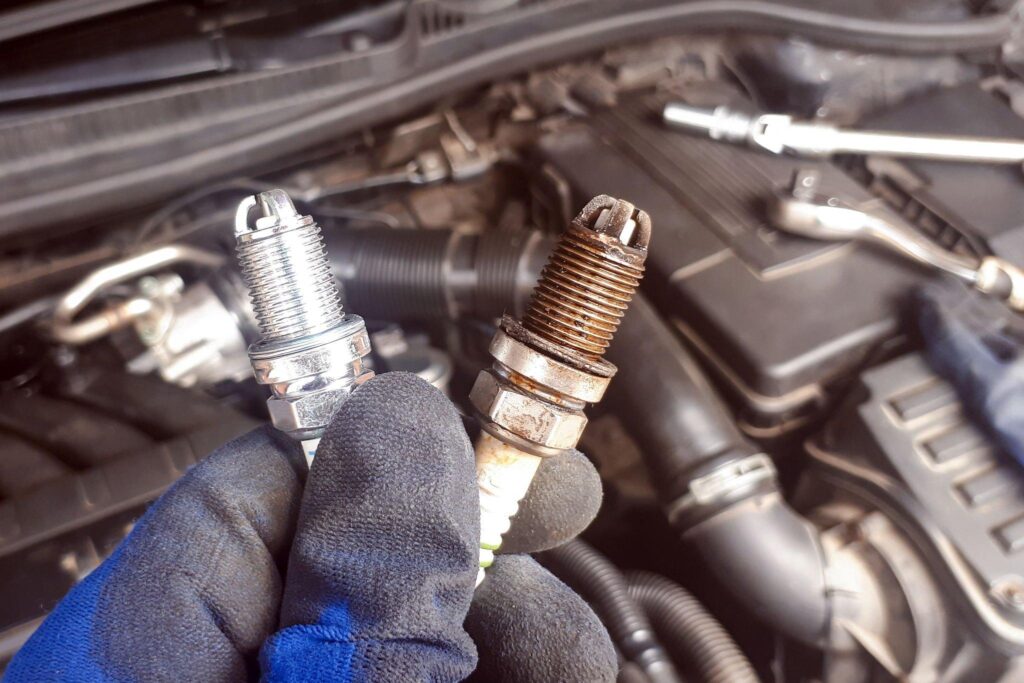
A spark jumps between the two electrodes, which are constructed of different metals, and an electric current is generated. The magnetic field is created by the electricity flowing through the plug wire.
A voltage is induced in the spark plug wire by the magnetic field, which results in a spark arcing across the gap between the electrodes. Because of these sparks, the air/fuel combination is ignited and the engine starts up.
Why Is Carbon Buildup Bad For The Spark Plug?
A spark plug with carbon deposits is less effective in maintaining a steady flame front, which can lead to a badly running engine.
The spark voltage is diminished because the carbon deposits act as a resistance channel between the electrodes. Because of this, the engine may not perform as well as it otherwise would.
To add insult to injury, carbon deposits can serve as an insulator, stopping the spark in its tracks before it even reaches the space between the electrodes. The engine’s performance may potentially suffer as a result of this.
What Are Symptoms Of Carbon Build-Up?
Carbon accumulation can cause a wide range of symptoms, depending on how bad the problem is. Decreased performance, loss of power, or even total engine failure are all possible outcomes. Additionally, a dashboard “check engine” light may be on.
Decreasing engine performance is a frequent sign of carbon buildup. This might lead to a lack of acceleration force or an overall slowdown when driving. The worst possible scenario is that the engine entirely stops working.
Carbon accumulation might also be indicated via a dashboard check engine light. If the check engine light turns on, it’s a good idea to get the automobile checked out by a professional.
Moreover, you can diagnose and read the color of your spark plug to detect any issues.
Spark Plug Carbon Fouling Causes
A carbon clogged spark plug might be the result of a variety of different factors, including:
Carbon Fouling
Carbon fouling, often induced by a rich fuel mixture, can give spark plugs a matte black or gray look.
In a typical combustion process, the majority of the fuel oxidizes and becomes carbon dioxide and carbon monoxide gas. A buildup of carbon deposits results from the polymerization of carbon in the unburned fuel when there is more fuel than oxygen.
- These molecules are drawn to the high temperatures near the spark plug’s tip and insulator, as well as elsewhere in the combustion chamber.
- The fuel system and the engine’s air intake are usually the starting points for troubleshooting. A carbon issue might be caused by an excess of fuel if the fuel injector is blocked or stuck open.
- Inaccurate readings from the mass air flow sensor or oxygen sensors about the air entering the engine or the oxygen level of the exhaust stream can lead to a rich-running condition that can cause carbon to clog the spark plugs.
The way air flows past the valves also plays a role. The flame front and fuel droplet size in the combustion chamber will be disrupted if the airflow is turbulent due to carbon deposits on the intake valves or other airflow restrictions. This implies that not all of the gasoline put into the intake port or combustion chamber will be burned.
Oil Fouling
Spark plugs that have been contaminated by oil often take on a glossy black look. Deposits on the tip, porcelain, or shell can form if there is excessive oil in the combustion chamber.
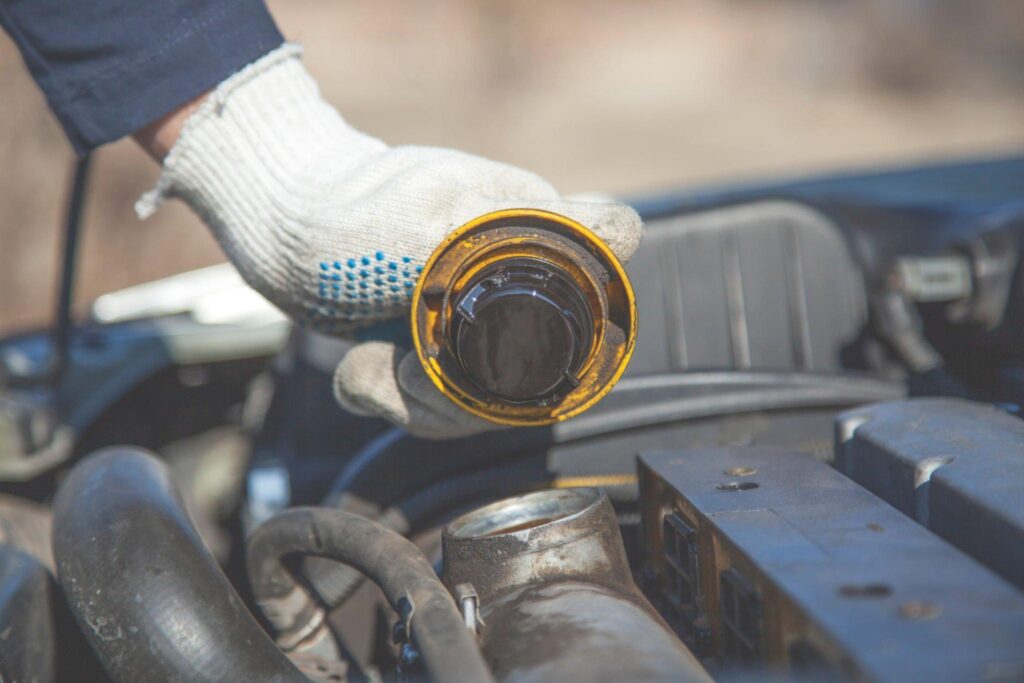
If you’re not sure if the problem is carbon or oil fouling, just smell the spark plug. Piston rings, valve stem seals, and the positive crankcase ventilation (PCV) system can all be sources of oil. A leak-down test is able to detect piston rings that are leaking. A relative compression check can be used to determine the severity of mechanical difficulties in a cylinder that has oil fouling.
Faulty PCV Systems
A growing problem in today’s engines is oil fouling due to faulty PCV systems. As time has progressed, these systems have evolved into more than simply a simple check valve. Modern engines can be equipped with electrical controls that govern when the crankcase vapors are sucked into the engine, preventing the oil from being contaminated.
There are PCV systems that include a heater for times when moisture might cause the valve to freeze. The crankcase pressure might increase if the valve freezes. The valve seals may be compromised if oil is driven past them.
In a short amount of time, the spark plugs might get clogged with oil droplets and vapors if the PCV valve is trapped in the open position.
Turbochargers
Malfunctioning turbochargers are another potential cause of fouled spark plugs. In spite of their durability, the turbine shaft seals can be damaged by high temperatures and subpar oil. When the intake is pressured, the oil used to lubricate the shaft might make its way into the engine’s combustion chamber.
Original Equipment Manufacturers have issued Technical Service Bulletins (TSBs) on high oil use. The majority of these issues center on the inactive cylinders and the varying valve timing.
Vacuum Leaks in the Cylinders
The major cause of these issues is vacuum leaks in the cylinders, which draw engine oil through the rings and into the combustion chamber. Cylinder deactivation in automobiles creates a vacuum in the crankcase that forces oil droplets past the ring and into the converter. Some Honda and General Motors engines have experienced this.
Vacuum pressures greater than normal can be created by the variable valve timing of some automobiles, especially on the exhaust and intake cams, which can cause oil to be sucked past the rings. Certain newer vehicles from Toyota, Honda, and General Motors fell into this category. The clients saw an increase in oil usage of more than a quart for every 1,000 miles driven.
Carbonization of Oil
Carbonization of oil caught between the rings is another way oil can harm the cylinder walls without actually passing through them. More damage and oil used as a result is possible. Because of the oil being used up, the bearings may get damaged if they run dry.
Coolant Problems
A misfire can be caused by a leak of internal coolant if it gets on a spark plug. The fouled plug may only affect one or two nearby cylinders, indicating that the issue is restricted to the intake manifold or the head gasket. Charred deposits of burnt coolant on the electrodes and insulator look like ash and can lead to pre-ignition and a misfire code if they’re not removed.
The ground strap and center electrode may seem chalky when the plug is removed. Since the additives phosphate, zinc, and others that might contaminate the catalytic converters have been diminished in modern coolants, this sort of buildup does not occur as rapidly.
Because of this, it’s not uncommon for drivers to ignore a coolant leak for hundreds of miles or more as the plug progressively clogs up. Back in the day, when the converter was blocked, the engine would shut down before any serious problems arose.
Other Less-Known Causes of Carbon Fouling
If you look up or ask around about what causes carbon fouling, the first thing you’ll hear is that the air-fuel mixture is simply too rich. That’s still correct, however here are some other factors that might lead to carbon fouling:
- Constantly covering small distances means your engine never gets warmed up, which prevents it from burning fuel efficiently.
- Issues with the fuel injectors might be due to clogging, being stuck in the open position, or a delay in the injection time.
- The incorrect spark plugs might be to blame, as could spark plugs with a thermal range that is too high for your vehicle.
Can You Clean Carbon-Fouled Spark Plugs?
A carbon-fouled spark plug can be cleaned rather than replaced. This is achieved using a variety of techniques, including:
To remove carbon from spark plugs, sandblasting can be used. This process involves a machine that sprays sand out with a jet of air. Some do-it-yourself repairmen have said that the extra carbon may be burned off using a butane torch.
Use a wire brush or sandpaper to physically remove the carbon. Cleaning spark plugs with commercially available cleaners is a viable option. You can get them at your local car parts store at a reasonable price.
How Can We Prevent Carbon Fouling?
The most crucial fact to keep in mind is that carbon fouling is really a symptom, not the actual problem. Assuming you have already experienced this, but have not addressed the root cause, you will continue to do so until you do so.
Taking these precautions can help you avoid carbon fouling on your spark plugs:
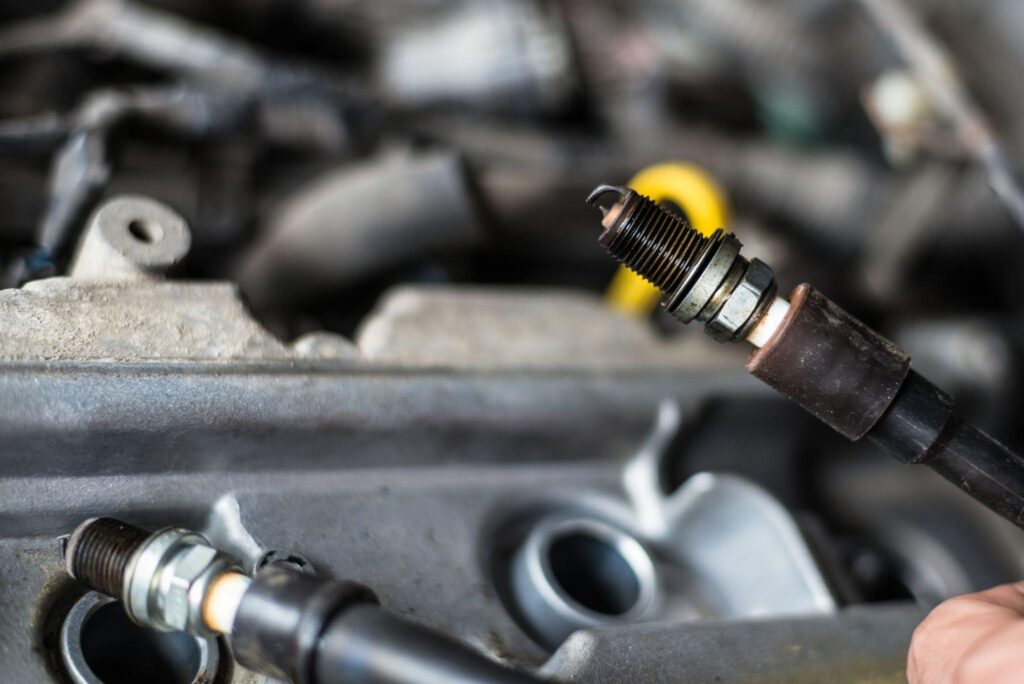
Before setting out on the road, make sure your car is well warmed up, especially if you only sometimes travel long distances. Working at the optimum engine temperature helps avoid carbon accumulation on the spark plugs.
Maintain your Fuel Injectors
A clogged injector or one that is jammed open might be the cause, so checking them often is a smart idea. Ensure you’re using spark plugs suitable for your engine by checking out our prior post on spark plug heat range for more details.
In addition, you may ask your technician, the store where you want to buy the plugs or the car’s manufacturer. In addition, the User Manual for your car may suggest specific spark plugs for your vehicle.
Clean your Fuel System with An Additive.
To avoid damaging your fuel system with gum buildup, use a gasoline stabilizer. Maintain your engine by having it checked regularly by a professional mechanic.
How Do I Stop My Spark Plugs From Fouling?
If you neglect to change the oil for a lengthy period of time, it will dry up, the rings won’t cover as well, and unburned fuel and air will enter the exhaust system. Fixing or replacing worn or cracked piston rings or cylinder walls is another way to prevent oil from fouling spark plugs.
How To Properly Tune an Engine?
To avoid carbon buildup on the spark plug electrodes and maximize engine efficiency, tuning is essential for a gasoline engine. Here is a comprehensive guide on tuning a gas-powered vehicle’s engine:
Ensure the Engine is Cool Before Proceeding.
This will increase the reliability of the data you collect. Take off the air filter cover and find the gas pedal. The throttle linkage controls the throttle valve’s opening and closing, regulating the amount of air that flows into the engine.
Turn the Engine on While Companion Holds Throttle Linkage.
Don’t let go of the hold until the engine temperature has reached the optimal range for operation. When the engine is hot enough to work properly, pull the spark plug wires out one by one and check each spark plug individually. Get the tester grounded to the engine block.
While your buddy controls the throttle, you may hold the spark plug wire against the terminal. A blue spark should seem to leap between the electrodes. Do this for all four cylinders and write down the total. Check the results against the manual’s guidelines. Adjust the readings as needed if they fall below the acceptable range.
Connect the Wires to the Spark Plugs Again and Turn the Key.
Do not touch the throttle until the engine has reached normal operating temperature. Proceed until all measurements fall within the acceptable range.
Frequently Asked Questions
Is it more effective to clean the spark plugs or to replace them entirely?
Spark plugs may be cleaned instead of replaced in most cases. To avoid spending a fortune on new spark plugs, try cleaning them as often as possible.
Cleaning your air filter and fuel injectors regularly is an effective preventative measure. Keep your engine clean and free of carbon buildup by following these guidelines to get the most out of your spark plugs.
To what extent would installing a cold-air intake prevent carbon from accumulating in my vehicle?
Installing a cold-air intake system on your automobile is one technique to help mitigate carbon buildup. By drawing colder air from outside the engine compartment, a cold-air intake system improves fuel combustion and lessens the likelihood of carbon accumulation.
Talk to a mechanic if you have doubts about whether or not a cold-air intake might benefit your car. They can advise you on the best intake system for your vehicle and show you how to put it in.
How can carbon deposits be cleaned from a spark plug?
To clean a spark plug of carbon deposits, a wire brush is your best bet. Rinse the plug under cold water until no trace of soap remains, then repeat the scrubbing process to get rid of any remaining carbon. After the plug has dried, you may put it back in the engine.
Seek professional assistance if you are unsure of how to clean carbon deposits from a spark plug. They’ll show you how to remove carbon buildup from the plug and keep it that way.
Conclusion
In most cases, a filthy air filter is to blame for carbon accumulation on spark plugs. Carbon fouling of the spark plugs is brought on by the engine sucking in more dirt and grime through a filthy air filter.
A filthy fuel injector is another major culprit in carbon accumulation on spark plugs. Carbon fouling of the spark plugs results from the engine sucking up dirt and grime through a filthy fuel injector.
Carbon-fouled spark plugs are avoidable if you maintain a clean air filter and fuel injectors. By adhering to these guidelines, you can prevent carbon buildup in your engine and keep it operating smoothly.

